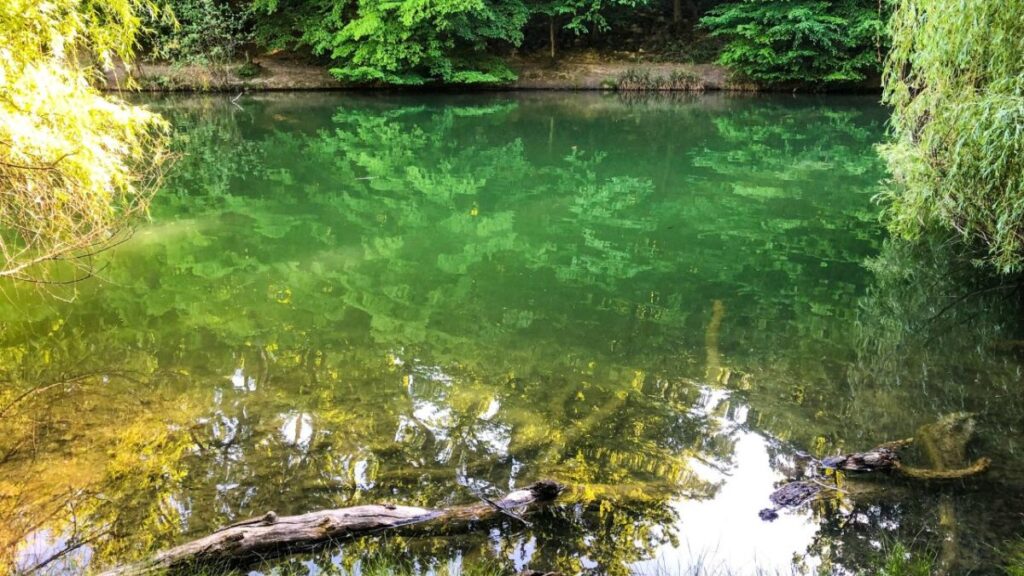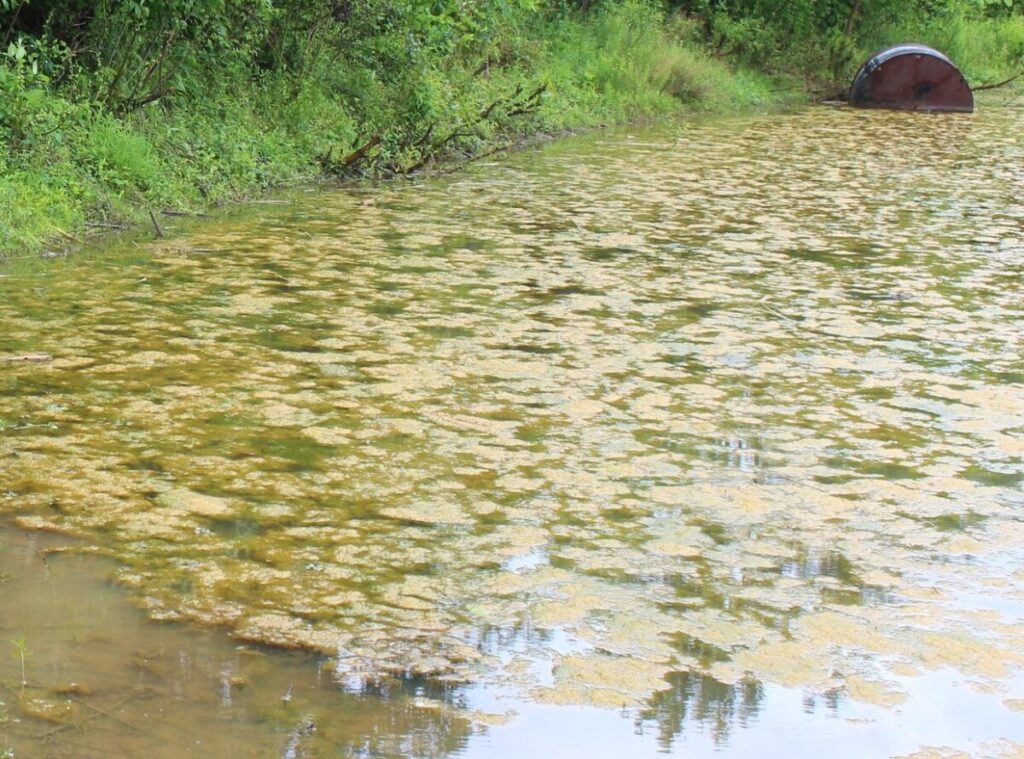“Is that healthy green or a harmful bloom?” is a question we hear a lot in East and Middle Tennessee. Green pond vs harmful algae bloom is more than a color test, it’s about reading the water’s behavior and knowing when to step back. In a healthy pond, tiny phytoplankton tint the water a light, almost emerald hue and there’s no surface scum or harsh smell. When conditions tip the wrong way, cyanobacteria can take over and create paint-like streaks, pea-soup water, foamy mats, and odors that make you wrinkle your nose. If you see those signs, avoid contact, keep pets out, and follow public-health guidance.
What a “good” green looks like
A light green tint, normal fish behavior, and two feet or more of visibility usually point to a plankton community that’s doing its job in the food web. In freshwater, the organisms behind most problem blooms are cyanobacteria, which are different from the mixed plankton that support a balanced pond. That’s why the same color can mean two very different things.

Clear warning signs you shouldn’t ignore
Trust what you see and smell. Public-health agencies say to stay out of water that looks discolored, has paint-like streaks or scum, gives off a musty or rotten-egg odor, or has dead fish along the shore. Animals are especially vulnerable, so keep dogs away from suspicious water. In Tennessee, you can check state guidance or report a suspected bloom through TDEC and the Department of Health.

Why ponds tip from healthy to harmful
Warm, calm weather and extra nutrients create the perfect setup for blooms. Fertilizer overspray, eroding banks, and stormwater runoff feed cyanobacteria, which can multiply fast and sometimes produce toxins. EPA and USGS both point to nutrient control as the most effective long-term prevention, especially phosphorus.
Practical steps that actually help
Start with simple prevention. Reduce nutrient inputs from lawns and bare soil, and treat stormwater as a resource instead of a shortcut to the pond. EPA’s HAB guidance calls nutrient reduction the primary lever, and extension groups echo the same advice for neighborhood ponds.
Circulation matters too. Bottom-diffused aeration keeps the water gently mixed, holds oxygen near the sediments, and makes it harder for stagnant pockets to form. Land-grant fact sheets and water-quality notes describe aeration as a proven way to raise dissolved oxygen and reduce the conditions that let blooms surge. If your pond is shallow, a surface aerator can help; deeper coves benefit more from diffusers on the bottom.
When a bloom is already present, follow public-health guidance first. You can document the conditions, keep people and pets out, and then focus on prevention and recovery once the water clears. EPA’s control-measures page also outlines physical and chemical tools that managers consider after a bloom starts, along with their trade-offs.
How Aquatic Weed Wizards fits in
If you manage a backyard pond or private lakefront, you don’t have to guess your way through this. We design and install aeration and fountain systems, provide seasonal pond management, and handle shoreline fixes and sediment work when depth has vanished near the banks. If lab toxin testing is required for a public beach or drinking supply, we point you to state channels rather than claiming to operate a lab, because toxin verification belongs with public-health authorities.
What to do right now if the water looks off
Keep people and pets out, snap a few photos, and note recent weather. If you’re in Tennessee, review state guidance and advisories. Then get your pond on a prevention plan that focuses on nutrients, bank stability, and steady circulation so you spend less time guessing and more time enjoying clear water.
If you’re looking at green water and wondering which kind of green it is, get a plan in place. We can design the right aeration layout, set up routine visits, and fix the spots where sediment and erosion keep feeding the problem. Call 865-622-8282 or request a visit from our Tennessee team.
